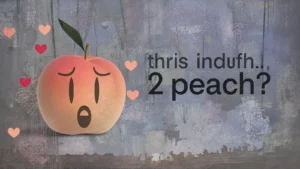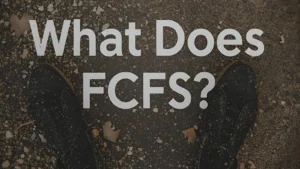In the workplace, how you communicate can leave a lasting impression. While “no worries” is a common, casual phrase, it might not always fit in a professional setting. Knowing how to say “no worries” professionally can help you maintain a polite, respectful tone while still delivering the same message.
“Looking for a professional way to say ‘No worries’? Discover these polite and confident alternatives that keep conversations positive while maintaining a professional tone. Perfect for emails, meetings, or any work setting!”
Here are 28 professional alternatives to “no worries” that you can use in various workplace scenarios.
Why Should You Avoid “No Worries” in Professional Settings?
Although “no worries” is friendly, it can sometimes come across as too informal, especially in more serious or business-like environments. Using professional language reflects your respect for others and your commitment to clear, courteous communication.
Best Professional Ways to Say “No Worries”
1. “You’re welcome. I’m happy to assist.”
Scenario: Someone thanks you for help on a project.
Reply: “You’re welcome. I’m happy to assist.”
Impact: This response is warm and welcoming, showing your willingness to help.
2. “It was my pleasure.”
Scenario: After completing a favor or task for someone.
Reply: “It was my pleasure.”
Impact: Adds a gracious tone and emphasizes your positive attitude.
3. “No problem at all.”
Scenario: A colleague apologizes for asking for a favor.
Reply: “No problem at all.”
Impact: Reassures them that the request didn’t inconvenience you.
4. “I’m glad I could help.”
Scenario: After assisting with a complex task.
Reply: “I’m glad I could help.”
Impact: This reply shows that you’re invested in supporting your colleagues.
5. “Please don’t hesitate to ask.”
Scenario: When someone thanks you for helping with a small task.
Reply: “Please don’t hesitate to ask.”
Impact: Encourages future communication while staying professional.
6. “It’s all taken care of.”
Scenario: After resolving an issue for a client or coworker.
Reply: “It’s all taken care of.”
Impact: Assures that the problem has been handled effectively.
7. “I’m here to assist whenever needed.”
Scenario: A team member needs ongoing support.
Reply: “I’m here to assist whenever needed.”
Impact: Shows dependability and a willingness to provide continuous help.
8. “Consider it done.”
Scenario: You agree to take care of something for a colleague.
Reply: “Consider it done.”
Impact: Confidently affirms that the task is under control.
9. “I’m happy to support the team.”
Scenario: After helping with a group project.
Reply: “I’m happy to support the team.”
Impact: Reinforces your role as a team player.
10. “It was no trouble at all.”
Scenario: Someone thanks you for going the extra mile.
Reply: “It was no trouble at all.”
Impact: Keeps the tone light while ensuring professionalism.
11. “I’m more than happy to help.”
Scenario: A colleague appreciates your assistance.
Reply: “I’m more than happy to help.”
Impact: This response is warm and reinforces your willingness to assist.
12. “Don’t mention it.”
Scenario: After performing a small favor.
Reply: “Don’t mention it.”
Impact: Keeps things casual but still polite in a professional context.
13. “It’s part of the job.”
Scenario: A client thanks you for your service.
Reply: “It’s part of the job.”
Impact: Sets a clear professional boundary while being courteous.
14. “Happy to take care of it.”
Scenario: After completing a requested task.
Reply: “Happy to take care of it.”
Impact: Adds a touch of positivity to the interaction.
15. “I’m here to help whenever you need.”
Scenario: A client or coworker expresses gratitude.
Reply: “I’m here to help whenever you need me.”
Impact: Offers ongoing support in a professional tone.
16. “It was a pleasure working with you.”
Scenario: After finishing a project with a colleague.
Reply: “It was a pleasure working with you.”
Impact: Expresses gratitude and professionalism.
17. “I’m at your service.”
Scenario: When responding to a superior or client.
Reply: “I’m at your service.”
Impact: Communicate that you’re available to assist whenever required.
18. “Glad to be of service.”
Scenario: After resolving an issue for a client.
Reply: “Glad to be of service.”
Impact: This phrase is polite and expresses satisfaction in helping others.
19. “Feel free to reach out anytime.”
Scenario: Someone appreciates your help on a long-term project.
Reply: “Feel free to reach out anytime.”
Impact: Encourages future communication and maintains a professional tone.
20. “It’s my responsibility, and I’m happy to handle it.”
Scenario: After completing a significant task.
Reply: “It’s my responsibility, and I’m happy to handle it.”
Impact: Reflects accountability while being positive.
21. “I appreciate the opportunity to assist.”
Scenario: A client or boss thanks you for your efforts.
Reply: “I appreciate the opportunity to assist.”
Impact: Demonstrates gratitude and professionalism.
22. “I’m just doing my job.”
Scenario: Someone praises your dedication to a task.
Reply: “I’m just doing my job.”
Impact: Humble yet professional.
23. “You can count on me.”
Scenario: Someone apologizes for needing your help.
Reply: “You can count on me.”
Impact: Reassures them that you’re reliable without sounding too informal.
24. “I’m glad everything worked out.”
Scenario: After resolving a challenging issue.
Reply: “I’m glad everything worked out.”
Impact: Focuses on the positive outcome.
25. “Always happy to contribute.”
Scenario: Someone appreciates your input on a project.
Reply: “Always happy to contribute.”
Impact: Highlights your willingness to be part of the solution.
26. “It’s no inconvenience.”
Scenario: After completing a last-minute request.
Reply: “It’s no inconvenience.”
Impact: This response shows flexibility and professionalism.
27. “I’m more than willing to help.”
Scenario: A coworker feels guilty for asking for help.
Reply: “I’m more than willing to help.”
Impact: Reassures them without sounding too casual.
28. “It’s been my pleasure to assist you.”
Scenario: A client thanks you after a long-term project.
Reply: “It’s been my pleasure to assist you.”
Impact: Wraps up the interaction with grace and professionalism.
FAQs
What are some professional ways to say “No worries”?
- Provides formal alternatives to keep the tone respectful and polished.
How can I reassure someone politely without saying “No worries”?
- Tips for professionally conveying reassurance.
What should I say if I want to sound empathetic?
- Suggestions for showing understanding and support in a work-appropriate way.
How can I respond to a minor mistake in a positive tone?
- Phrasing ideas that acknowledge the issue without emphasizing it too much.
What are some concise ways to say “No worries” in an email?
- Short, professional phrases that fit well in written correspondence.
How should I reply if I want to sound encouraging?
- Encouraging alternatives that help keep the conversation constructive.
What can I say instead of “No worries” when speaking to a client?
- Client-friendly responses that maintain professionalism and good rapport.
How can I communicate “No worries” in a leadership role?
- Suitable alternatives for managers and supervisors to express understanding.
What are some polite ways to say “No worries” to a coworker?
- Friendly but professional responses that maintain good workplace relationships.
Why is it important to find professional alternatives to “No worries”?
- Explains the value of using formal language in professional settings for clear and respectful communication.

Stuck on what to say? ReplyResponses.com gives you clever, funny, and savage comebacks for every moment — because silence isn’t golden when you can drop a perfect reply!












